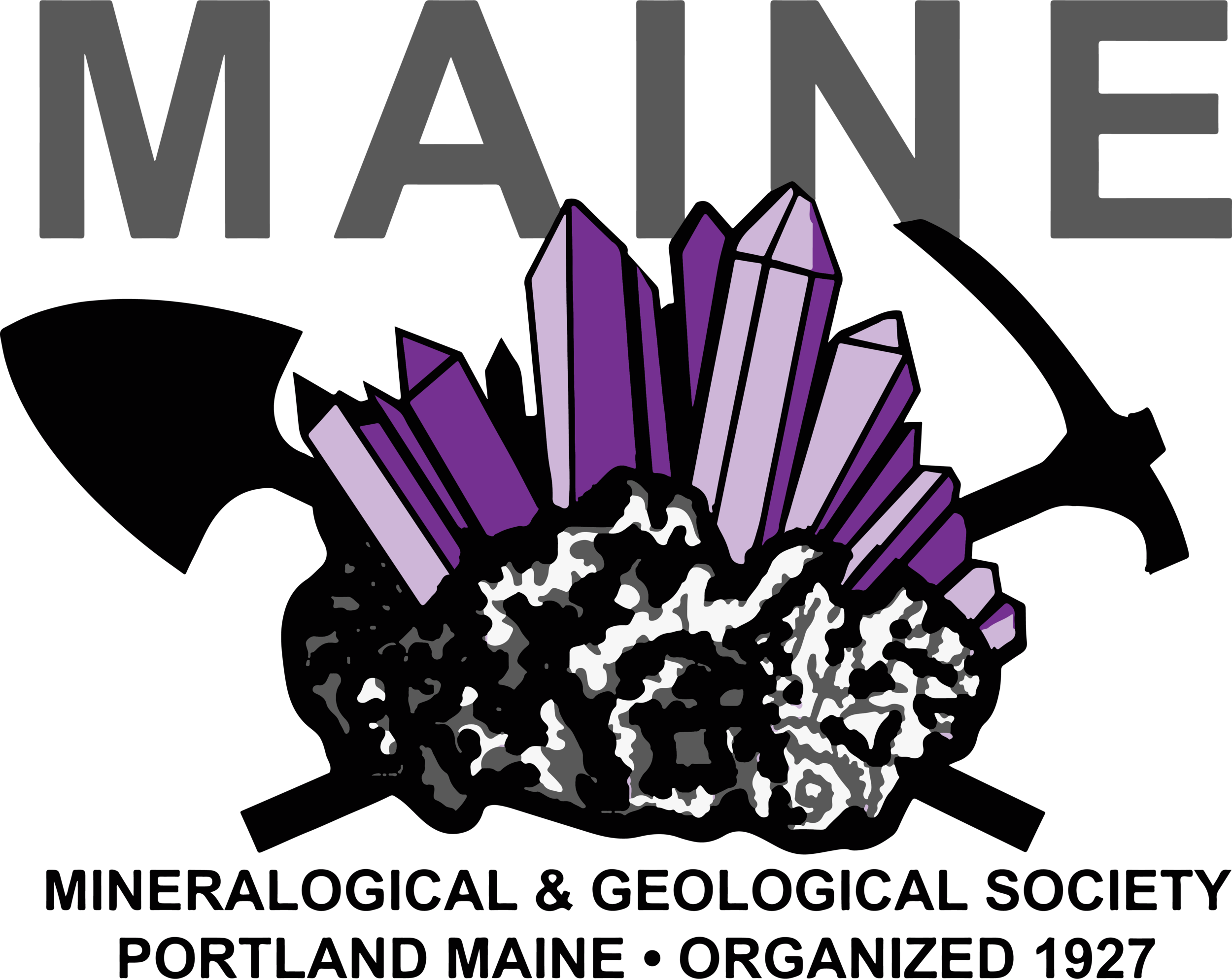
Fluorapatite
Apatite_Keith_Mt_Apatite_13x_1p5mm.jpg
o Mineral Description: (https://www.mindat.org)
Apatite
Hexagonal
Ca5(PO4)3F
Dana 8th ed: 41.8.1.1
Name History: Fluorapatite is by far the most common species in the apatite group. It occurs in almost all igneous rocks, during initial phases of paragenesis, as an accessory mineral, commonly in microscopic crystals, and may occur as very large bodies as late-magmatic segregations in alkaline igneous rocks. Also occurs crystallized in pegmatitic facies of acidic and basic types of igneous rocks. Common in magnetite deposits, and in hydrothermal veins, particularly those formed at high temperatures, and in Alpine cleft-type veins. Fluorapatite may be confused with beryl, milarite or phenakite.
o Scale:
- Imaged at 13x magnification
- Crystals are approx. 1.5 mm in diameter
- Crystal habit is a relatively uncommon collapsed doubly terminated prism (collapsed along the C axis).
o Local:
- Keith mine on Mount Apatite, Oxford Co., Maine
- Collected May 31, 2017.

Gold
Byron, ME

Sodalite
Dennis Hill, Litchfield

Chrysoberyl
Witt Hill

Wulfenite
- Tetragonal, PbMoO4, Dana 8th ed: 48.1.3.1
Name History: Re-named in 1845 by Wilhelm Karl von Haidinger in honor of Franz Xavier von Wulfen [November 5, 1728 Belgrade, Serbia - March 16, 1805 Klagenfurt, Austria], botanist, mineralogist, alpinist and member of the Order of the Society of Jesus (Jesuit). Wulfen authored a monograph on the lead ores of Bleiberg, Austria. This mineral was originally named "plumbum spatosum flavo-rubrum, ex Annaberg, Austria" in 1772 by Ignaz von Born. In 1781, Joseph Franz Edler von Jacquin called the mineral "Kärntherischer bleispath". Other names were later proposed.
Scale: Imaged at 15x magnification
Wulfenite crystal in the upper left has a square cross section of approximately 0.5 mm per side.
Local: Ojuela Mine, Mapimí, Mun. de Mapimí, Durango, Mexico
Host sample was purchased at the MMGS 2017 show.
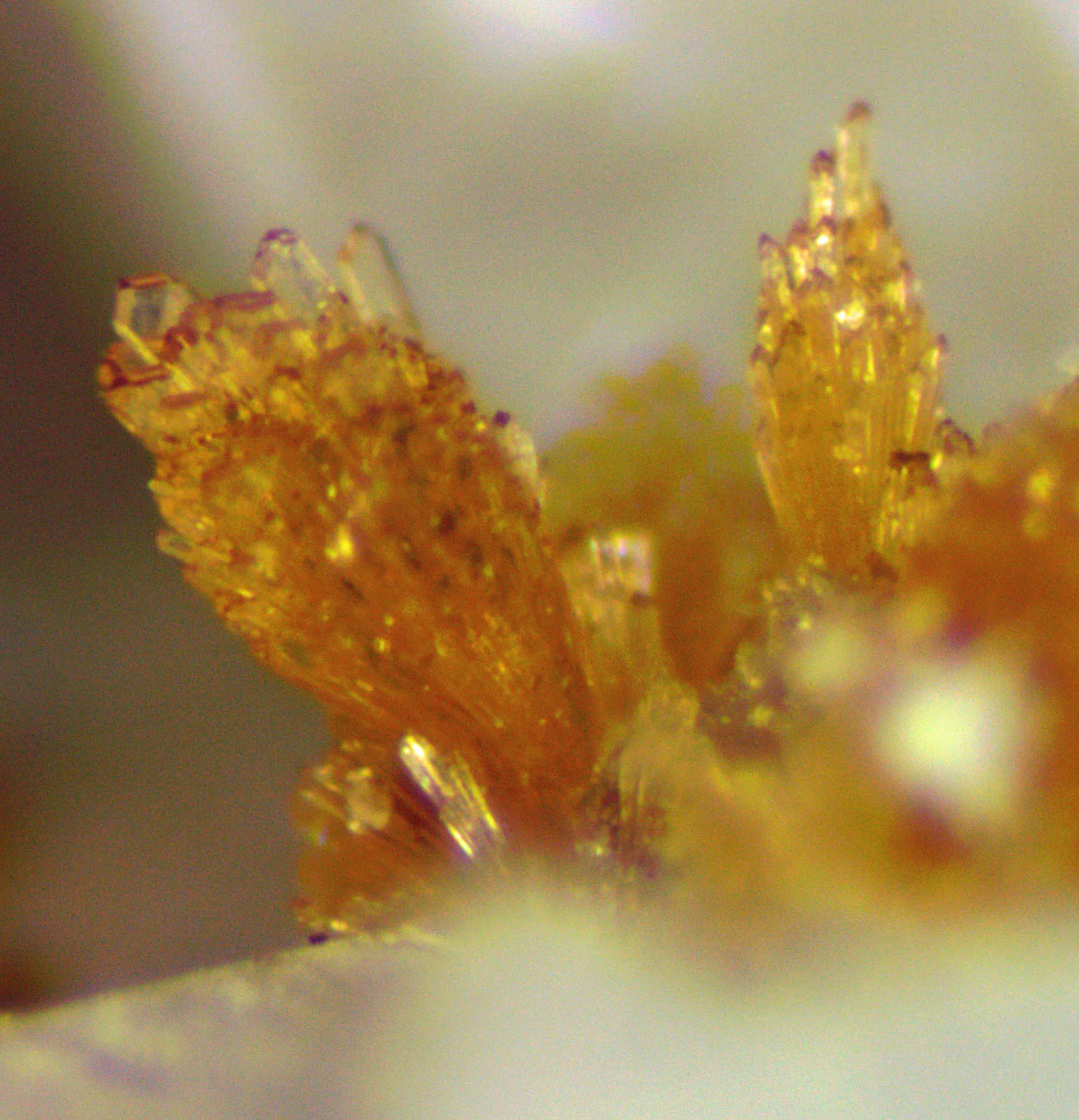
Eosphorite
Orthorhombic
Mn 2+ AlPO4 (OH)2 · H2O
Dana 8th ed: 42.7.1.2
Name History: Named in 1878 by George J. Brush and Edward S. Dana from the Greek έωσφοʌος for "dawn-bearing," in allusion to the pink colour of the original material.
Scale: Imaged at 40x magnification
Left hand rose is approximately 1.1 mm
Local: Bell pit (Bell Quarry), Newry, Oxford Co., Maine
Source sample was purchased from Kermit Smyth in 2016.

Fluorapatite
Hexagonal
Ca 5 (PO4) 3F
Dana 8th ed: 41.8.1.1
Name History: Renamed in 1860 from the original apatite of Abraham Werner by Carl F. Rammelsberg to emphasize the chemical composition. Apatite is from the Greek ἀʋατάω (apatao), to deceive, as apatite was often confused with other minerals (e.g. beryl, milarite). Rammelsberg added the "Fluor-" prefix in allusion to the dominance of fluorine in the composition.
Scale: Imaged at 30x magnification
Crystal is approximately 1.5 mm long.
Local: Havey Quarry, Poland, Androscoggin Co., Maine
Sample obtained in a swap in 2016

Tourmaline (broken zoned crystal)
Trigonal, Boron-rich silicate with a dog’s breakfast of other elements, Dana 8th ed: 61.3x.01.x
Name History: Reported by Christianus-Fridericus Garmann in 1707. The name "tourmali" was a generic name used in Ceylon [Sri Lanka] for colored gems, mostly zircons. About 1703, it had been discovered by Dutch lapidaries that some of the "zircons" arriving in the Netherlands were actually a previously undescribed mineral. Several names were given to the new mineral including "Pierre de Ceylan, by Lemery in 1717. Tourmalin, as a more or less specific mineral name, was used by Rinmann in 1766. Hill called it Tourmaline Garnet in 1771 and Richard Kirwan shortened the name to "Tourmaline" in 1794.
Scale: Imaged at 30x magnification
The broken tourmaline crystal is approximately 1.0 mm in length.
Local: Havey Quarry, Poland, Androscoggin Co., Maine
Sample obtained in a swap in 2016
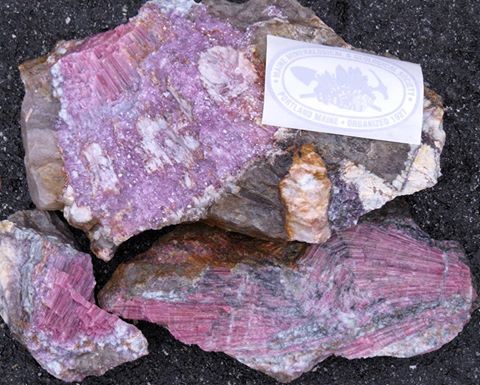
Specimen
Collected in Rumford Maine at a location that was open only to club members
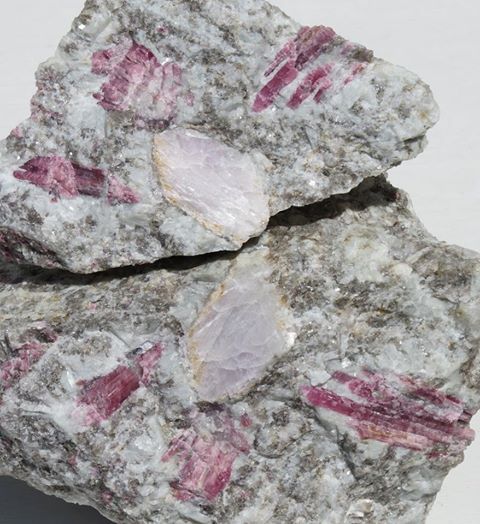
Specimen
Collected in Rumford Maine at a location that was open only to club members
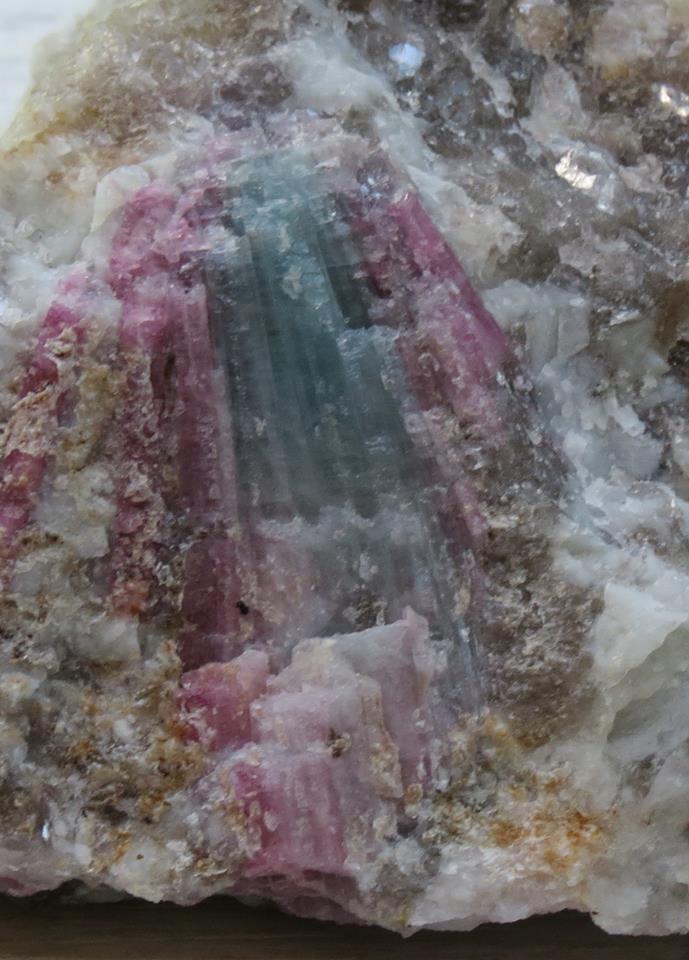
Specimen
Collected in Rumford Maine at a location that was open only to club members

Specimen
Collected in Rumford Maine at a location that was open only to club members

Specimen
Collected in Rumford Maine at a location that was open only to club members

Kyanite
Cook Road, Windham

Staurolite
Cook Road, Windham

Hematite
Hematite psudomorph after pyrite
o Mineral Description: (https://www.mindat.org)
Name: Hematite
Crystal habit: Trigonal
Chemical Formula: Fe 2 O 3
Dana 8 th Edition Number: 4.3.1.2
Name History: Originally named about 300-325 BCE by Theophrastus from the
Greek, "αιματίτις λίθος" ("aematitis lithos") for "blood stone". It is possibly the first mineral ever named ending with a "-ite" suffix. Translated in 79 by Pliny the Elder to haematites, "bloodlike", in allusion to the vivid red colour of the powder. The modern form evolved by authors frequently simplifying the spelling by excluding the "a", somewhat in parallel with other words originally utilizing the root "haeme".
o Scale:
Imaged at: 25x Magnification
Field of view: 3 mm across
o Local:
Location: Mount Mica Quarry, Paris, Oxford Co., Maine, USA
Imaged by Jon Dykstra

Tourmaline
Mineral Description: (https://www.mindat.org)
Name: Elbaite (Tourmaline)
Crystal habit: Trigonal
Chemical Formula: Na(Al 1.5 Li 1.5 )Al 6 (Si 6 O 18 )(BO 3 ) 3 (OH) 3 OH
Dana 8 th Edition Number: 61.3.1.8
Name History: Reported by Christianus-Fridericus Garmann in 1707. The name "tourmali" was a generic name used in Ceylon [Sri Lanka] for colored gems, mostly zircons. About 1703, it had been discovered by Dutch lapidaries that some of the "zircons" arriving in the Netherlands were actually a previously undescribed mineral. Several names were given to the new mineral including
Pierre de Ceylan, by Lemery in 1717. Tourmalin, as a more or less specific mineral name, was used by Rinmann in 1766. Hill called it Tourmaline Garnet in 1771 and Richard Kirwan shortened the name to "Tourmaline" in 1794.
o Scale:
Imaged at: 10x Magnification
Field of view: Crystal is 4mm across
o Local:
Location: Havey Quarry, Poland, Androscoggin Co., Maine, USA
Imaged by Jon Dykstra
o Notes on Tourmaline chemistry:
Formula: A(D 3 )G 6 (T 6 O 18 )(BO 3 ) 3 X 3 Z
A = Ca, Na, K, or is vacant (large cations);
D = Al, Fe 2+ , Fe 3+ , Li, Mg 2+ , Mn 2+ (intermediate to small cations - in
valence balancing combinations when the A site is vacant);
G = Al, Cr 3+ , Fe 3+ , V 3+ (small cations);
T = Si (and sometimes minor Al, B 3+ );
X = O and/or OH;
Z = F, O and/or OH.
Note: In the formulas of the group members, we have put the D site cations in parentheses in order to facilitate the assignment of the different cations to the crystallographic sites.

Chrome-bearing Grossular
Mineral Description: (https://www.mindat.org)
Name: Chrome-bearing Grossular
Crystal habit: Isotropic
Chemical Formula:Ca3(Al,Cr3+)2(SiO4)3-> Ca3Cr2(SiO4)3
(Uvarovite)
Dana 8th Edition Number:51.4.3b.2
Name History:
Originally named "cinnamon stone" ("Kanelstein" in German) in 1803 by Abraham Gottlieb Werner and renamed grossularite by Werner in 1808. Named for the color of gooseberries (Ribes grossularium) as the original specimens were this color.
Uvarovite is the name given to the green calcium chromium garnet end member. Uvarovite was named after Count Sergey Semeonovich Uvarov (1786-1855), Russian statesman and scholar, President of the Academy of St Petersburg (1818-1855).
o Scale:
Imaged at:45x.
Field of view:2.2 mm across.
o Local:
Location: Orford Nickel mine, St-Denis-de-Brompton, Le Val-Saint-François RCM, Estrie, Québec, Canada
Imaged by Jon Dykstra


















